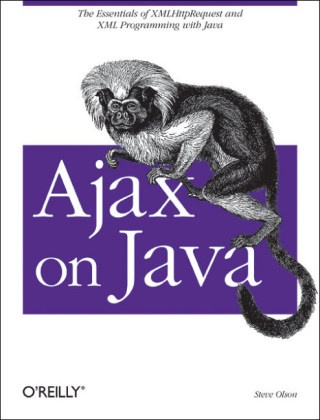Read more
This practical guide shows you how to make your Java web applications more responsive and dynamic by incorporating new Ajaxian features, including suggestion lists, drag-and-drop, and more. Java developers can choose between many different ways of incorporating Ajax, from building JavaScript into your applications "by hand" to using the new Google Web Toolkit (GWT).Ajax on Java starts with an introduction to Ajax, showing you how to write some basic applications that use client-side JavaScript to request information from a Java servlet and display it without doing a full page reload. It also presents several strategies for communicating between the client and the server, including sending raw data, and using XML or JSON (JavaScript Object Notation) for sending more complex collections of data.The book then branches out into different approaches for incorporating Ajax, which include: The Prototype and script.aculo.us Javascript libraries, the Dojo and Rico libraries, and DWR Integrating Ajax into Java ServerPages (JSP) applications Using Ajax with Struts Integrating Ajax into Java ServerFaces (JSF) applications Using Google's GWT, which offers a pure Java approach to developing web applications: your client-side components are written in Java, and compiled into HTML and JavaScriptAjax gives web developers the ability to build applications that are more interactive, more dynamic, more exciting and enjoyable for your users. If you're a Java developer and haven't tried Ajax, but would like to get started, this book is essential. Your users will be grateful.
List of contents
Inhaltsverzeichnis
Preface
1. Setup
Requirements
Installing Tomcat
Installing Ant
2. JavaScript for Ajax
Creating the Application
Running the Example
3. A Simple Ajax Servlet
Building and Deploying the Ajax Application
Running the Example
4. XML and JSON for Ajax
The Character Decoder
Setting Up a Simple XML Document
Back on the Client: Mining the XML
Building the Application
Running the Application on Tomcat
Passing Data with JSON
Summary
5. Getting Useful Data
Form Entry with Ajax
Building a Suggestion Field
6. Ajax Libraries and Toolkits
Using the Dojo Toolkit
Using the Rico Toolkit
Using DWR with Ajax
Drag 'n' Drop with Scriptaculous and Prototype
7. Ajax Tags
Creating a Tag Library
Third-Party Tag Libraries
8. Ajax on Struts
Struts-Layout
Adding Ajax to Struts with DWR
Ajax with Struts: What Have We Learned Here?
9. JavaServer Faces and Ajax
The JSF Lifecycle
Writing a Custom JSF Component
Developing a Custom JSF Tag
Handling JSF Input by Extending HtmlInputText
Writing the JSF Support for Ajax
Summary
10. Google Web Toolkit
Getting Started with GWT
Debugging the Application
Fleshing Out the Application: The Client
Supplying Services to the Client
Testing ZipCodes with the Service
GWT Widgets
Index
About the author
Steven Olson has been a software developer for 20 years, starting in 1984 with ForTran, Pascal, Basic, and, later, C at a company called Signetics. In 1991, he went to work for Novell, writing C. He began dabbling in Java, and in 1995 was one of the first to join the Java development group at Novell. Since then, he has consulted or worked directly for eight other companies writing primarily in Java. Currently, he works for logoworks.com, where his programming adventures continue.
Summary
A practical guide that shows you how to make your Java web applications more responsive and dynamic by incorporating new Ajaxian features, including suggestion lists, drag-and-drop, and more. It also presents strategies for communicating between the client and the server, including sending raw data.

